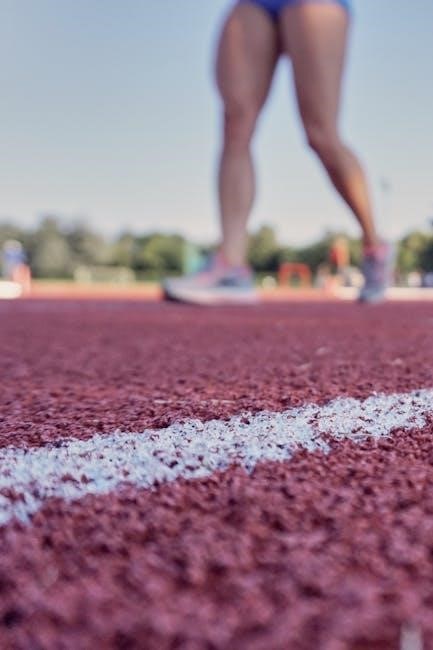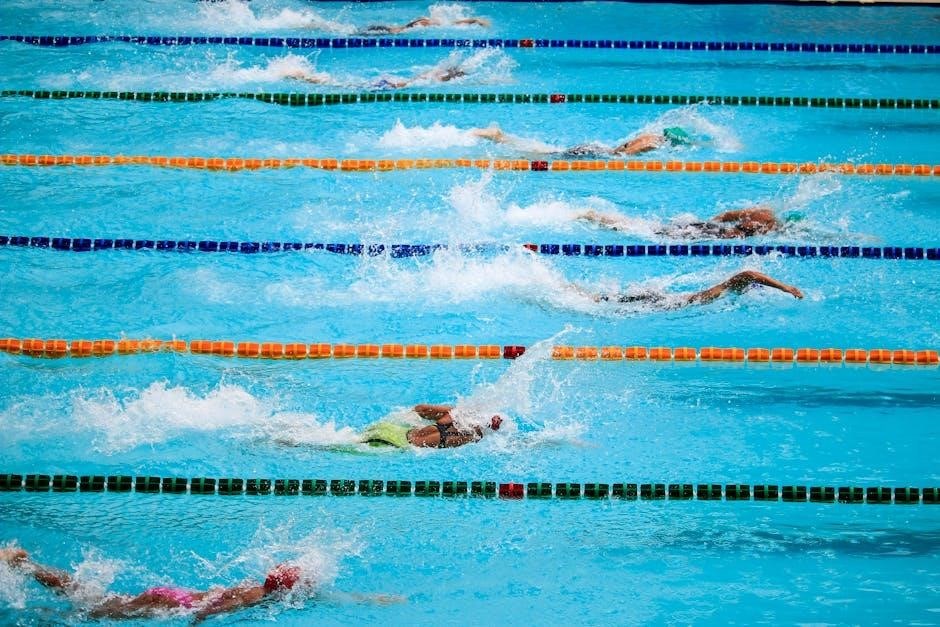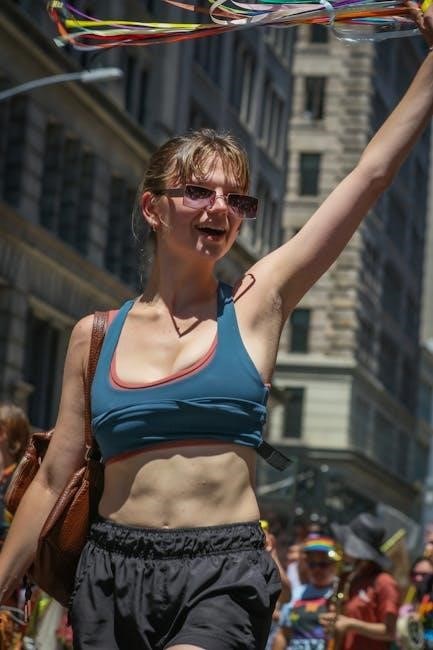Potato Olympics: Event Ideas and Activities
The Potato Olympics offers engaging activities where students explore numeracy through potato athletes․ Events like Distance‚ Diving‚ Gymnastics‚ Spinning‚ and the Velodrome can be adapted․ Integrating math‚ science‚ language arts‚ and social studies into one comprehensive lesson plan is possible․ May the best Potato win!
Overview of the Potato Olympics Concept
The Potato Olympics is an innovative and amusing educational activity designed to engage students in a fun‚ hands-on learning experience․ It creatively combines the excitement of the Olympic Games with the versatility of the humble potato‚ transforming the classroom into a miniature Olympic arena․ The core concept revolves around students using potatoes as “athletes” and participating in a series of specially designed events that integrate various academic disciplines․
This engaging activity promotes teamwork‚ problem-solving‚ and critical thinking skills as students collaborate to prepare their potato athletes for competition․ Each event is carefully crafted to incorporate elements of math‚ science‚ language arts‚ and even social studies‚ providing a comprehensive and interdisciplinary learning experience․ For example‚ students might measure distances for the potato throw‚ calculate angles for the potato dive‚ or design creative routines for potato gymnastics․
The Potato Olympics fosters a playful and supportive learning environment where students can explore numeracy in a practical and engaging way․ It encourages creativity‚ experimentation‚ and friendly competition‚ making learning enjoyable and memorable․ Ultimately‚ the Potato Olympics aims to inspire a love of learning and demonstrate how academic concepts can be applied in real-world scenarios‚ all while having a good laugh with a spud!

Integrating Numeracy and Other Subjects
The Potato Olympics offers a unique platform for seamlessly integrating numeracy skills with various other subjects‚ creating a holistic and engaging learning experience․ While numeracy forms the foundation of many events‚ its application extends beyond simple calculations‚ fostering a deeper understanding of mathematical concepts in a practical context․ For instance‚ measuring distances in the potato throw involves not only using units of measurement but also understanding concepts like estimation and comparison․
Science can be incorporated through exploring the physics of projectile motion in the potato throw or investigating the properties of potatoes for optimal performance in the spinning event․ Language arts can be integrated by having students write persuasive speeches to advocate for their potato athlete or create imaginative stories about their Olympic journey․ Social studies can be woven in by researching the history of the Olympic Games‚ different cultures’ use of potatoes‚ or the ethics of fair competition․
By connecting numeracy to these diverse subjects‚ the Potato Olympics encourages students to see the interconnectedness of knowledge and develop a more comprehensive understanding of the world around them․ This interdisciplinary approach makes learning more relevant‚ meaningful‚ and memorable‚ fostering a deeper appreciation for the value of education․
Essential Materials and Preparation
Organizing a successful Potato Olympics requires careful planning and gathering of essential materials to ensure a smooth and engaging experience for all participants․ First and foremost‚ you’ll need a sufficient supply of potatoes‚ ensuring that each student or team has their own “athlete․” Consider providing a variety of potato sizes and shapes to add an element of chance and encourage creative problem-solving․
For the various events‚ you’ll need specific equipment․ The distance throw requires measuring tapes or rulers‚ while the potato diving event calls for targets and containers․ Gymnastics might involve props like small platforms or fabric scraps for creating poses․ The spinning event needs smooth surfaces and timers․ The velodrome race could use cardboard tracks or designated lanes․
Beyond event-specific materials‚ general supplies include score sheets‚ pencils‚ and potentially medals or certificates for recognition․ It’s also crucial to prepare the space by setting up designated areas for each event‚ ensuring safety and clear boundaries․ Consider providing instructions or demonstrations for each activity to ensure everyone understands the rules and objectives․ Lastly‚ have a first aid kit readily available for minor mishaps․
Event Idea: Potato Distance Throw
The Potato Distance Throw event is a classic test of strength and technique‚ adapted for our starchy athletes! This event challenges participants to launch their potato as far as possible‚ emphasizing both throwing power and strategic angle․ Preparation involves marking a clear throwing line and a designated landing area‚ preferably on a grassy or soft surface to prevent potato damage․
Each participant gets a set number of throws‚ typically three‚ to maximize their distance․ Measurements should be taken from the throwing line to the point where the potato first lands‚ using measuring tapes or marked increments on the ground․ Consistency in measurement is crucial to ensure fairness․
To add a numeracy component‚ students can record their individual throw distances and calculate averages․ They can also compare their results with classmates‚ creating graphs or charts to visualize the data․ Factors such as throwing technique‚ potato size‚ and even wind conditions can be discussed‚ introducing elements of physics and data analysis into the activity․ Safety should be emphasized‚ ensuring ample space between throwers and spectators․
Event Idea: Potato Diving (Accuracy)
The Potato Diving event tests accuracy and precision‚ challenging participants to launch their potato towards a target area․ Unlike a distance throw‚ this event focuses on controlled throws to land within a designated zone․ To set up‚ create a series of concentric circles on the ground‚ with the smallest circle at the center representing the highest score․ Use chalk‚ paint‚ or even hula hoops to define these zones․

Participants throw their potato from a set distance‚ aiming for the center circle․ Points are awarded based on which circle the potato lands in‚ with higher points for closer proximity to the center․ Each participant gets multiple attempts‚ typically three‚ to improve their score․ This event encourages strategic thinking‚ as participants adjust their throwing technique to achieve better accuracy․
Integrating numeracy is simple: students record their scores for each throw‚ calculate their total score‚ and compare their results with others․ They can also analyze the distribution of their throws‚ identifying patterns and areas for improvement․ The event can also incorporate fractions or percentages‚ calculating the percentage of throws that landed within a certain zone․
Event Idea: Potato Gymnastics (Creative Posing)
Potato Gymnastics is a whimsical and imaginative event that encourages creativity and artistic expression․ Unlike traditional sports‚ this activity focuses on the presentation and posing of the potato athlete․ Participants are tasked with creating unique and entertaining poses for their potato‚ showcasing its flexibility and personality․ This event blends art and play‚ allowing students to think outside the box and develop their storytelling skills․
To begin‚ provide a variety of props and accessories‚ such as pipe cleaners‚ googly eyes‚ miniature hats‚ and fabric scraps․ Participants use these materials to decorate and customize their potato‚ giving it a distinct character․ Next‚ they craft a series of poses‚ arranging the potato in different positions to convey a specific theme or narrative․
A panel of judges‚ typically classmates or teachers‚ evaluates each potato based on creativity‚ originality‚ and overall presentation․ Points are awarded for the most inventive poses‚ the clever use of props‚ and the ability to tell a story through visual expression․ This event promotes self-expression and builds confidence as students share their imaginative creations․

Event Idea: Potato Spinning (Rotation Challenge)
The Potato Spinning event is a fun and engaging challenge that explores the principles of physics and rotational motion․ In this activity‚ participants spin their potato athletes and measure the duration of the spin․ It’s a test of balance‚ momentum‚ and careful execution‚ blending scientific inquiry with playful competition․
To set up the event‚ provide a smooth‚ flat surface for spinning the potatoes․ Each participant carefully spins their potato‚ aiming for the longest possible rotation time; Factors like the potato’s shape‚ weight distribution‚ and the initial spinning force all play a role in determining its performance․
Participants can experiment with different spinning techniques to optimize their potato’s rotation․ Some may try spinning it on its end‚ while others might prefer a sideways approach․ Encourage students to observe and analyze how different techniques affect the potato’s spin․ This encourages critical thinking and problem-solving․
Measurements are taken using a stopwatch‚ and the participant with the longest spin time is declared the winner․ The Potato Spinning event provides a hands-on opportunity to explore scientific principles and encourages participants to think creatively about improving their potato’s performance․
Event Idea: Potato Velodrome (Rolling Race)
The Potato Velodrome event brings speed and excitement to the Potato Olympics․ This rolling race challenges participants to propel their potato athletes along a designated track‚ simulating a miniature velodrome․ It’s a test of dexterity‚ strategic thinking‚ and propulsion skills‚ combining physical activity with friendly competition․
To set up the event‚ create a defined track or course on a smooth‚ flat surface․ Participants propel their potato athletes along the track using various methods‚ such as blowing‚ gentle pushes‚ or even a small fan․ The goal is to navigate the course as quickly as possible without touching the potato directly․
Participants can experiment with different propulsion techniques to optimize their potato’s speed and control․ Some may try generating a steady stream of air‚ while others might focus on precise pushes to maintain momentum․ Encourage students to observe and analyze how different techniques affect the potato’s trajectory․
Times are recorded using a stopwatch‚ and the participant with the fastest time to complete the course is declared the winner․ The Potato Velodrome event provides a fun and engaging way to explore concepts like force‚ motion‚ and aerodynamics and encourages participants to think creatively about improving their potato’s performance․
Data Analysis and Awarding Medals
After the Potato Olympic events conclude‚ the crucial stage of data analysis begins․ This phase provides valuable opportunities for students to engage with numeracy skills․ Using the scores collected from each event‚ create a comprehensive tally or leaderboard‚ visually representing each potato athlete’s performance․ This can be done manually or using spreadsheet software like Excel․
Analyze the data as a class‚ identifying the winner for each individual event and the overall champion of the Potato Olympics․ Encourage students to calculate averages‚ compare scores‚ and discuss the factors that contributed to success in each event․ This fosters critical thinking and analytical skills․
The culmination of the Potato Olympics is the awarding of medals․ Design and create printable medals‚ awarding gold‚ silver‚ and bronze to the top three performers in each event and the overall winner․ These medals can feature ordinal numbers and fun potato-themed designs․

The medal ceremony celebrates the participants’ achievements and reinforces the spirit of the Olympic Games․ By analyzing data and awarding medals‚ students not only celebrate their potato athletes’ successes but also develop valuable numeracy skills and a deeper understanding of data analysis concepts․

